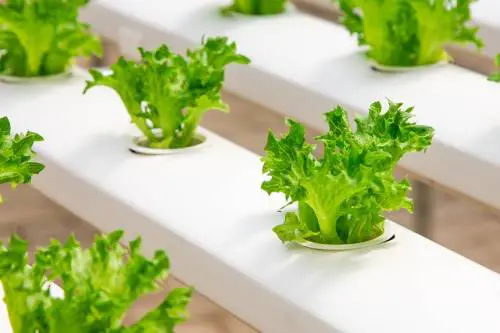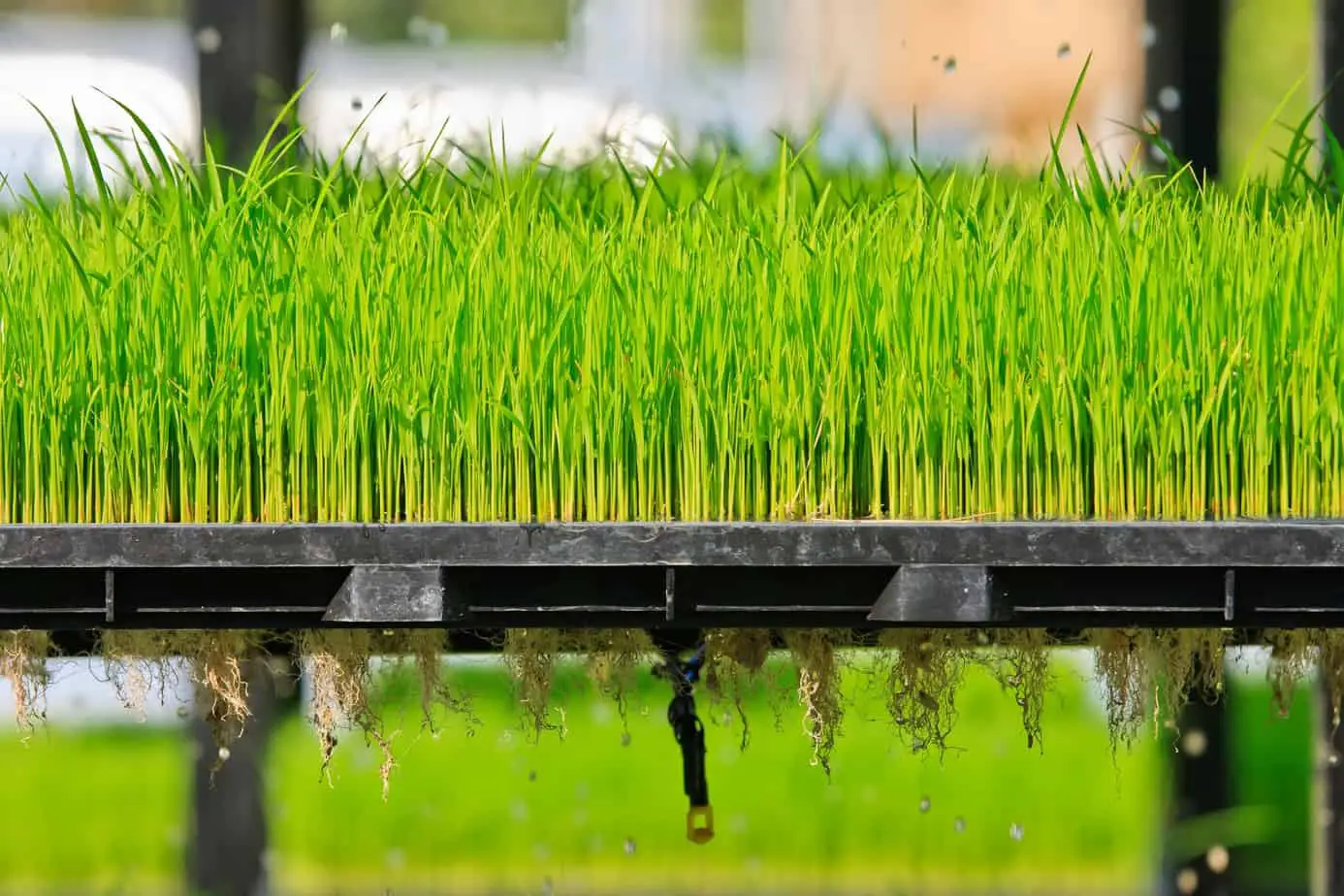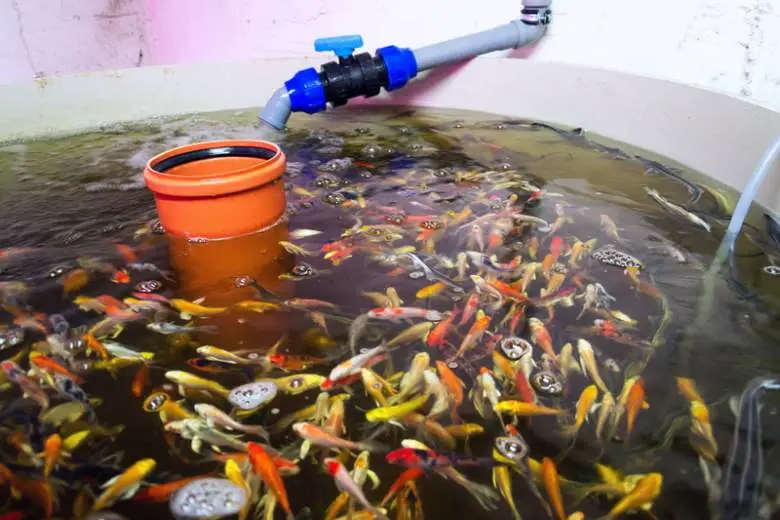For a few years, there have been two popular growing systems for crops of all varieties without the use of soil. These are aquaponics and hydroponics, and while they both follow some very similar principles, there are a few differences between the two.
Hydroponics is a method of gardening where plants are not grown in conventional soil, unlike the standard approach to agriculture. Instead, the roots are submerged in an inorganic growing medium and the nutrients are fed through nutrient-rich water. By contrast, aquaponics is a method of growing plants in the water and using this water as a habitat for breeding fish too.
Continue reading to better understand the differences, similarities, and difficulties of each type of system. We will also see if one does come out on top as a clear winner. First off, we will take a quick look at the basics of each, so we know where we are on a level playing field while comparing information.
Aquaponics vs. Hydroponics: An Introduction and Comparison
Basics of Hydroponics
Hydroponics use nutrient-enriched water and depending on the system type, they use inert growing mediums such as pea-gravel or perlite. You can identify the different types of hydroponic systems such as aeroponics, ebb and flow, nutrient film technique (a.k.a. NFT), and Wilma systems.
The nutrient solution delivery changes throughout the different systems, but the principle is the same, there is no soil used, and the roots have contact with these solutions. However, in an aeroponics system rather than the roots sitting in a body of water, a nutrient-rich mist feeds the plants as the roots hang in suspension.
In all the other systems, oxygen is introduced to the water via air stones. These are the same as ones used in fish tanks for aquariums. Hydroponic systems can also make use of grow lights where they can be taken indoors and run in basements, patios, or any area where there is enough space to erect systems.
Aquaponics: The Basics
Aquaponic gardening is a blend of technologies. First, there is aquaculture where fish are grown in tanks or fishponds rather than being caught in the wild. In this setting, the water becomes dirty and needs to be disposed of. This is an enormous waste of precious natural resources, while at the same time; it becomes harmful for the fish.
Next, you have the hydroponic way of growing which is ideal apart from the need to refresh the nutrients on a regular basis. Now, when you marry these two together, you have a closed-loop system.
Plants feed off the bacteria in the fish waste and all of the nutrients it contains. This step in the loop cleans water from all elements toxic to the fish. At this point, water flows back to the holding tank where fish can grow in ideal conditions. There is still the need to oxygenate the water via the air stones as in hydroponic systems.
What do Hydroponics and Aquaponics Have in Common?
Because the two systems are closely tied together, there are many similarities. Here is a quick rundown of what both Hydroponics and Aquaponics have in common with each other.
- They are both agricultural methods to grow crops without the use of soil.
- Both system types rely on water as being the delivery system for the plant’s nutrients.
- All nutrients will be artificially provided to crops.
- Both types of systems are stable and can produce higher yields than soil-grown crops.
- Both growing methods suffer less from pest damage.
- Water and nutrient levels are lower for each plant than when grown in conventional methods. There is less wastage and crops are delivered what they need rather than roots fighting to find nutrients.
Aquaponics vs. Hydroponics: an Overview
| Hydroponics | Aquaponics | |
| Definition | Cultivation of plants in water | Cultivation using fish and plants in a closed-loop system |
| Nutrient type | Chemical nutrients | Organic matter produced by fish waste supplies nutrients |
| Cost-effectiveness | Less cost-effective due to purchasing nutrients. Chemical nutrient costs are increasing due to mineral scarcity. | Highly cost-effective as organic matter is used to supply nutrients. There is a natural balance. |
| Startup speed | Fast to start up | These are slower to set up than a Hydroponics system |
| Operating temperatures | Aside from growing lights, the overall temperatures are lower to prevent the growth of bacteria | Higher temperatures are encouraging to induce the growth of nutrient-rich bacteria |
| Productivity | Hydroponics produce lower yields | Aquaponics produce higher yields. With an aquaponics bio-filter in place, growers can see even larger yields |
| System unloading | These systems require flushing at intervals. Nutrient-rich water needs replacing because of salt build-up, and where the solution becomes toxic to plants. | As it is a looped system, nutrients pass around the system and are used. Only water from evaporation and feeding the plants needs replacing |
| Ease of maintenance | These have a higher degree of maintenance | These systems are easy to maintain |
Hydroponics vs. Aquaponics: The Advantages and Disadvantages
Hydroponics Advantages
There are many commercial growers, who turn to hydroponics as their preferred growing technique due to the levels of control, and the that it can fit quickly and easily into their business models. This happens for a few reasons:
Consistent Costing
Costs will vary depending on system size, management, and product sourcing in a hydroponic system. Nevertheless, these scale in relation to production and are more consistent, thus giving an element of predictability.
Financial stability can be found because accounting and ordering become easier. This isn’t just the case for commercial ventures, but also for home hydroponic growers. The hydroponic nutrients are manufactured, and prices will remain steady across all months of the year. Compared to Aquaponics, the amount of fertilizer that needs to be used can be estimated in a narrower margin than food and supplements that are required in an aquaponics system.
Ease of Operation and Training
The learning curve can be much more natural with a hydroponics system. If there are additions to a system, the steps are straightforward and consistent. This can be from a home system to a commercial venture where training becomes more leisurely.
Because there are fewer elements in a hydroponic system, the operation can be much easier. Once you have lighting, nutrient levels, and growing media sorted; there is not much else that needs tending to.
Space and Location
A hydroponic system can be virtually any size you wish. This can encompass one pot to multiple pot flood and drain systems and nutrient film systems. Because there is a tendency to grow indoors and make use of grow lights, any spare area is a possible growth area.
Aquaponics, on the other hand, needs space for a fish tank, and although it is possible to use an indoor aquarium, this won’t equate to a large growing area. Grow beds can also be smaller in a hydroponic system as all they need is a six-inch deep bed to hold the pots compared to the required twelve-inch minimum for flood and drain systems in aquaponics.
Effective Use of Nutrients
Hydroponics gives growers ultimate control over their plants’ nutrients. Many of these are customizable for each plant type all through a growth cycle. Along with this is the control of the pH levels. As nutrients are adaptable, the water pH levels can be monitored, raised, or lowered as needed by pH controlling chemicals. With this, the environment becomes more sterile in a hydroponic system than an aquaponics system.
Hydroponic Disadvantages
Time and Commitment
Like most things in life, you get out of it what you put in. Hydroponics is no different, and to obtain the highest possible yields, you do need to put the time in and have a long-term commitment. When growing in soil, plants can be left to their own devices for days on end. Mother Nature will take care of them, and regulate the plant’s exposure to what they need to grow.
In hydroponics, there is nothing of this, and it is the grower who acts as Mother Nature. Without the correct care and the right amount of knowledge, plants can quickly die. Things can be automated to an extent, but even then, they do require supervision on a regular basis.
Experience and Knowledge
Although it can be straightforward to learn, a degree of expertise and knowledge will be required. The principles can be straightforward, but it is when you run into growing problems where experience shines. Nutrient mixtures for plant types can take a while to learn, and knowing when you need to adjust the pH, or drain and flush a system can be elusive to newer growers.
Being Organic
There is no question; hydroponically grown vegetables can be healthier than store-bought varieties. However, some people argue it isn’t possible to grow hydroponic vegetables organically.
There are some methods, which are suggested to grow organically. These suggestions are using coco coir that has added worm castings, or organic nutrients made naturally from fish bones, alfalfa, and cottonseed among other things.
Research continues, but eating healthy vegetables is the primary goal, and that is what hydroponics is good for, regardless of the nutrients not being organic.
System Failure and Electricity Risks
A hydroponic system relies on electricity to run. This could be for your grow lights, water pumps, and aerators to heating or cooling depending on your growing circumstances. The other main component is water, and as we know, the two don’t mix.
On most occasions, this isn’t a problem when precautions are in place. Additionally, because the use of electricity is the primary power source, if this stops for any reason; or equipment fails, you can have plants dying in a matter of hours if no action is taken. Pumps need to run efficiently to make sure plants have their nutrients, and lighting needs to be available for the correct periods.
Startup Costs and ROI
Depending on the type of system you want, you can spend a couple of hundred dollars as a bare minimum. You need growing pots, growing lights, pumps, and timers along with your growing media and nutrients.
Once you have all this in place, your costs do come down dramatically, and all you need will be nutrients and your electricity. The ROI is seen as being long-term because of these costs, but once you begin growing, the initial investment can be easily covered and justified.
Disposing of Nutrients
This can be seen as one of the significant downsides to a hydroponic system. This is for the cost, and the impact it can have on the environment. Systems do need flushing because there can be a buildup of salts which turns the solution toxic for plants.
Aquaponic Advantages
Fish Food Replaces Expensive Nutrients
The primary input of nutrients in an aquaponics system is fish waste. To make sure there is enough fish waste is by feeding them fish food. Depending on the system size, the cost for the year can be a matter of a few dollars.
When you compare the cost of fish food to nutrients, the fish solution is the most cost-effective.
Aquaponic Setups are More Productive
Once an aquaponics bio-filter is fully established in a system. Aquaponics growers can see faster and more profound growing results when compared to hydroponic systems. Even without these filters, aquaponics still holds the edge in yield size.
Aquaponics is Organic
While hydroponics is all about using a sterile environment to grow, aquaponics is the exact opposite and uses the closed-loop ecosystem to full effect. With bacteria and worms being used to break down ammonia and solid waste that is produced by the fish, these nutrients are then passed to the plants. These systems are organic in every sense of the word, and if any pesticides were used, this would be immediately harmful to the fish.
No More Root Rot
In hydroponic systems, “Pythium” can run amok and cause all sorts of problems. In an aquaponics system, the onset of this Pythium that results in root rot is almost non-existent because the plants build up tolerances against it.
Aquaponics Disadvantages
Although aquaponics does have plenty of positives, there are a few downsides.
System Construction is Complicated
Compared to a hydroponic system, the construction of an aquaponics system is far more complicated. There is the addition of fish tanks that come with additional plumbing, and requirements for more space. One other aspect that needs considering is the size of the growing area available, which is in proportion to the size of the fish tank. Calculating the balance between the two can be difficult for new growers.
Compared to the grow beds of a hydroponic system where pots are used. Aquaponics uses grow beds that are almost double in height at around twelve inches, and these are filled with the growing media. Also, there needs to be a bell siphon as the draining mechanism rather than letting water drain back through the pump once it is turned off between fill phases.
Cycling Time is Longer
Aquaponics systems create a closed-loop eco-system, and because of this, it takes a while for pH levels to adjust as the water is continually pumping around the system. Systems should run without fish for a few weeks (up to six) before anything is planted. Even then, it can take a while for microbial populations to become stabilized.
Until these levels of bacteria have risen, yields might be lower than anticipated in the first twelve months. During this time until a system is running correctly, the water needs periodic checking for the pH levels.
More Points of System Failure
Hydroponics can have two main areas that can quickly fail. These are your nutrient levels and your water pumps. In aquaponics, there are now multiple areas where things can go wrong. Fish can die for no reason, and if all are affected, this means no nutrients are getting to the plants.
Power or pump failures can affect both plants and the fish in the same manner, and if these are, off for extended periods, then both elements will suffer.
Due to system size, aquaponics is more often carried out in greenhouses or under canopies. These can introduce other points of failure if temperatures change too much in either direction.
Higher Initial Costs
You can design and build aquaponics systems out of recycled materials, and some of the most popular are PVC drums or the larger caged totes that can be modified. However, even these still add more to the overall build cost compared to a hydroponic system.
Electricity costs for fish pumps will be higher because they run around the clock to keep the water moving which delivers the right environment for your fish. These costs will be offset against growing lights if they are being used in a hydroponic system.
Which is Better: Aquaponics or Hydroponics?
Both hydroponics and aquaponics gardening systems follow many of the same principles while the methods of delivery are very different. Apart from the addition of fish tanks, system designs can be used for both. If there were to be one means of soilless growing which was to be the winner, then aquaponics might inch in front due to the higher yields growers can expect to see.
For average growers who want a system around their home, much of the decision comes down to available space and practicality. Startup and running costs for both systems will quickly be negated once you begin growing around the year compared to visiting the supermarket for a supply of fresh, healthy vegetables.





